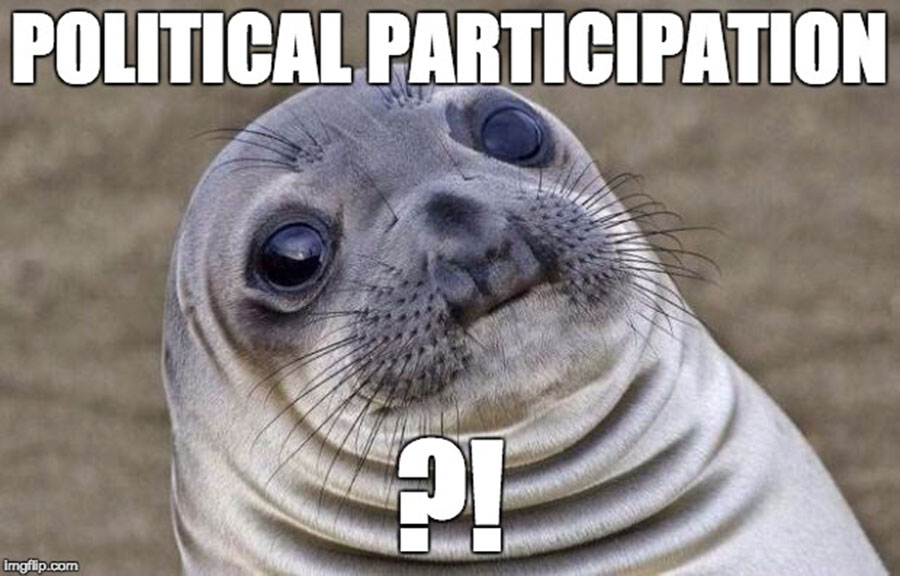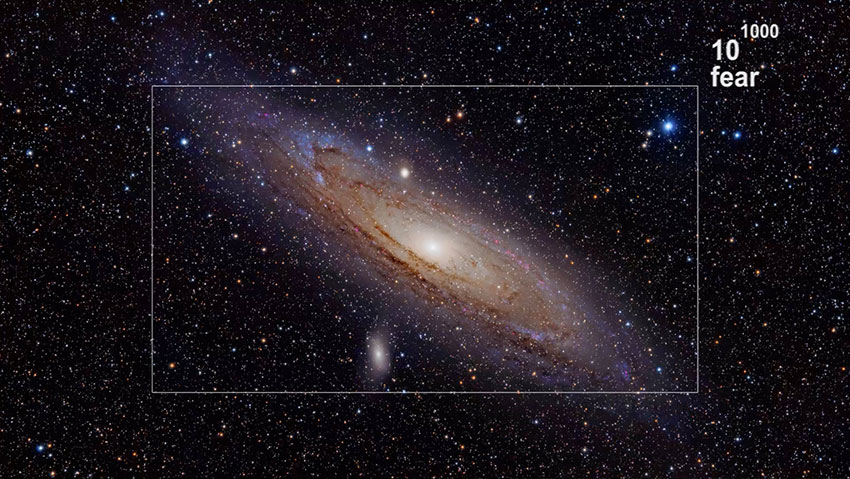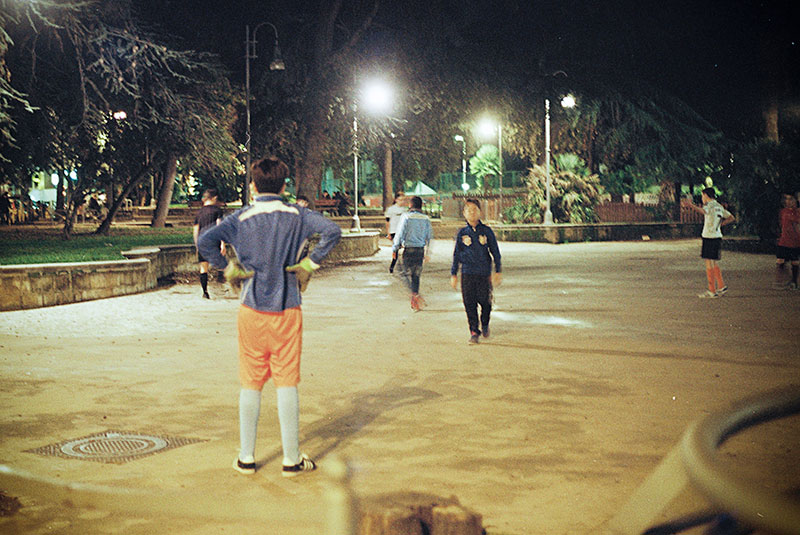Based on the newsfeed that newspapers, television or social media provide today, we are living in a dark world. Threat of physical violence in our previously safe neighbourhoods 1, faltering economies 2, environmental catastrophes 3, masses of fleeing people in inhuman conditions 4, rise of right-wing groups and racism 5 and calls for outright violence in Western politics 6 appear not to be exceptions in an otherwise steady and safe flow of life. These are becoming a norm of the everyday.
There is no denying that the events and phenomena take place in our time and even in our immediate surroundings. But, they are not the whole truth. This we certainly know, but perhaps less feel.
Emotional content and striking headlines catch attention and provide clicks; nothing new there. Triggering emotional reactions is not only limited to clicks though, but it seeps into our perception of security in everyday life. Is the world we are living in facing a Judgment Day?
In an individual’s life, some of the threats are more concrete than others. For most, the newsfeed creates an adverse image of the surrounding world even when the threats are not imminent. The events and statements turn into a web of abstract doomsday fears. Even if the threats wouldn’t affect us today, who is to say they won’t affect our lives tomorrow? In case of a threat being based on ‘maybe tomorrow,’ the fear itself becomes an illusion. The fear is in our minds more than it is in the concrete world. It is not based on immediate reality, but on a projection of a different future. It is fear of a change to something worse.
An ideal solution to reduce or eliminate the abstract fear would be to fix and solve the evils of the newsfeed. On an individual level, everyone is ought to act on an occasion one cares for. Still, there is often only so much an individual can affect external conditions in a situation of abstract threat.
If the question of fear of an abstract threat can be considered an illusion in most of our lives, designing to ease the distress becomes an attempt to design for or against images of the mind. What does design become in this situation? Designing counter-illusions or oblivion from the immediate present? Escapism? Distractions?
1. DESIGN FOR HOPE
“Imagine that you are constantly followed by a bully with a loud voice. The voice repeatedly tells you that you are a bad person, that you are worthless, and that nobody loves you. How would you feel if you were constantly threatened, that you have to obey, or else something terrible will happen to your family? Imagine being laughed or ridiculed in everything you try or do…”, begins an introduction to an awarded mobile game Temstem.
Instead of combating voices of the news media, Temstem aims in tackling inner voices of people who hear disturbing voices within. The application eases symptoms of hearing voices by activating language-producing region of the brain, by giving a task to working memory, and by boosting confidence of the user. Playing the game when the voices appear draws the user’s attention to positive words of the game, and distracts the negative ones the inner voices are telling.
Another mobile game application, Flowy, relieves a panic attack by directing focus of the user to breathe more calmly and evenly. Breathing calmly lets the player advance the game more easily. Through directing focus of the user, both game applications aid in gaining back internal control in a situation, in which the mind and body is slipping out of it. Both relief the symptoms, but neither promise to cure the original problem.
If fear of an abstract threat is an illusion of a worse tomorrow, reducing or eliminating the fear could be seen as turning one’s attention towards a possible better tomorrow. Since we can’t know the future, turning the attention towards the better is just as much an illusion and a work of imagination as the fear that doesn’t have a concrete touching point in one’s life.
Distraction and counteraction from fear could be observed as creating hope through enabling ‘confidence in future,’ ‘expectation of something desired,’ ‘trust, confidence,’ ‘wishful desire’ or ‘leaping in expectation.’ As hope is an expectation, it doesn’t need to rely on the actual condition or reality. It is escapism from reality; ‘an illusion,’ ‘an apparition,’ and an imagined future reality. It sets focus on the future instead of living in the now.
Hope can also be seen as conscious self-deception and denial of reality. It can simply appear as overlooking and refusing to accept the actual conditions. Whereas a key to long-term satisfaction lies in accepting one’s condition and being grateful for what is, hope can be observed as a preferably short-term boost of even false optimism. This belief can be a source of strength to continue through an uncertain situation, and to overcome acute obstacles 7.
For those living in a safe environment but having an abstract fear of tomorrow, designing for hope can be more considered as designing distractions from worries, reminding of a different future, and providing information for what an individual can do to relief the distress. As mobile games Temstem or Flowy, the aim of the design would be to treat symptoms and provide temporary ease instead of necessarily solving the underlying problem. Could the status quo of a threat be distracted by designing an application that distracts the user from the fear by ‘forcing’ them to focus on the positive? Could an application provide constant reminder of how the user can affect their situation through their own behaviour?
At first sight, designing for hope might appear noble, but perhaps it is design to cover symptoms of distress and even designing for delusions 8. Is design for hope just creating temporary amnesia, from which waking up to the reality is even harder?
2. DESIGN FOR PESSIMISM 9
A pessimist doesn’t hope. For them, the world is what it is and it can only get worse. If based on beliefs, pessimism becomes an entanglement of suspicion and distrust. If based on facts, pessimism grows into an inherent form of one-eyed hyperrealism. What is common to these is that both types of pessimism accept their surroundings as it is, and don’t try to change themselves or the surroundings for better. Neither of the types of pessimist also wake up in a hangover of reality.
The Ignorance Project, a spin-off of the Swedish Gapminder Foundation, investigates what the public knows and doesn’t know about basic global patterns and macro-trends. Through research, the project aims in fighting against ignorance by providing statistical information to both general public and schools. The basic message is that people often see the world as distorted or worse than it really is.
In reality, the world is not as dismal as can be understood from the news media. It is, in many ways, statistically going to a better direction when compared to the previous decades. Instead of a web of threats, perhaps what we are facing through our newsfeeds more than anything is errorism. Possibly not in form of false news, but in form of a distorted view on our surroundings received through the media.
If our newsfeeds can be considered a major source of fear of abstract threats, it is also worth noting that the newsfeed is also an illusion. Firstly, as the saying goes, ‘no news is good news.’ Good news don’t make headlines and are not as interesting as those based on grievances. Secondly, much of our social media newsfeeds are based on hearsay, opinions, and unchecked ‘facts.’
Similarly to the Ignorance Project, providing counter-information to the dark news could reduce abstract fear by providing a positive equivalent; a counterpart that is based on rational facts. Instead of aiming in creating distraction from the atmosphere of uncertainty around us, designing to provide a more realistic and balanced worldview could enable accepting the status quo, seeing wider variety of fact-based perspectives, and therefore reducing distress from the abstract fears. Similarly to the pessimist’s worldview, fewer illusions lead to fewer reality hangovers.
Whereas it’s easy to doom a newsfeed compiled of positive news as naïve, such feed of information could create a reality-based, rational counterforce to balance the adversity of the newsfeed. This would not reduce the relevance of the unpleasant news, but would perhaps provide a counterbalance to reduce the distress of abstract threats. Positive hyperrealism doesn’t provide temporary amnesia from the reality, but it aims in taking account both the negative and the positive perspective with a critical eye.
Unlike designing for hope, the approach doesn’t provide emotion-based false optimism or illusions. Rational hyperrealism is based on what is happening now, in the presence, whereas hope is based on a projection of a future. But, there are also similarities. Both focus on easing symptoms of fear, and neither tackle with solving the underlying causes of the glooms of the news media.
3. DESIGN FOR JOY
“A pessimistic worldview does not have to entail a life stripped of joy,” states philosopher Alain De Botton in his 2012 book ‘Religion for Atheists.’ “Pessimists can have a far greater capacity for appreciation than their opposite numbers, for they never expect things to turn out well and so may be amazed by the modest successes which occasionally bread across their darkened horizons.”
A pessimist’s worldview may be scarce of hope, since their mind is triggered by imagined or real adversities. Whereas hope is often triggered by external circumstances and is oriented to a future, joy can be observed as an internal state that is based on the present. Whereas hope is an ‘expectation;’ joy is ‘expression of pleasure,’ ‘gladness’ or ‘delight.’ Hope is understood as an element of joy.
Even though neither necessarily needs to be related to religions, both hope and joy have a strong reference to religious contexts. A brief Google search of both result in a long list of religious sources, and even dictionaries often strongly relate these to religious context and experiences. Many of the adverse news we encounter today are related to religions, either as an entitlement of events, or as a counter-reaction to the events. The clash and occasional outright trench warfare of worldviews and attitudes might make many dream of an atheist world, and talking about religions in the context of the recent phenomena might be considered thoughtless or even outrageous.
However, the structure provided by a religion as a provider of joy, hope and solace is worth observing and investigating. ‘In Religion for Atheists,’ De Botton breaks down roles of a religion in a society and in an individual’s life, and applies elements of religions to secular life without religious doctrines. He pinpoints human needs from sharing, support and solace to harmony, acceptance and safety, and observes and analyses how religions respond to these needs.
De Botton observes that the structure and mechanism of a religion allows people to be weak and imperfect, and to be comforted and aided to experience negative emotions. Religion promises resistance towards adversities through a community to rely on. It provides rhythm to one’s life. It teaches to accept and to be grateful of what one has. It triggers hope and a feeling of trust that everything will be ok.
In a secular world, these mechanisms to overcome obstacles are significantly scarcer. In a Western world that has long emphasized individuality, belonging to a community or place has become ever more challenging, as is connecting and sharing.
Designing through people and communities to create connectedness within the communities can provide support systems and safety nets to which to rely on in a secular context. Designing for encounters and interaction can provide contentment and sense of safety. Further, it can add to feeling of being supported and in control in a world that feels adverse.
Similarly to approaching reducing distress of abstract threat through positive hyperrealism, designing for joy is based on the present and on reality. It is not based on future-oriented illusions of hope, but on designing everyday encounters and interactions between people. Whereas design for hope and pessimism are covering or easing symptoms of fear instead of an intention to solve or cure, design for joy might also have potential to affect the underlying causes of the gloomy newsfeed.__
On 18 March 2016, immediately after a major arrest related to the Paris attacks, the French president François Hollande reminds that the “terror network is ‘much wider’ than previously thought,” writes The Telegraph, alongside many other media. ←
On 7 March 2016, an article in The Guardian states: “Investigation into the prospects of millennials – those born between 1980 and the mid-90s, and often otherwise known as Generation Y – has found they are increasingly being cut out of the wealth generated in western societies.” ←
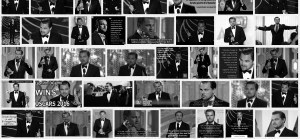
On 29 February 2016, Leonardo DiCaprio states in his Oscar acceptance speech: “Making The Revenant was about man’s relationship to the natural world. A world that we collectively felt in 2015 as the hottest year in recorded history. Climate change is real, it is happening right now. It is the most urgent threat facing our entire species.” Image Google Image Search. ←
On 18 March 2016, the Greek interior minister Panagiotis Kouroublis compares conditions on a refugee camp on the Greek border to those of a Nazi concentration camp in The Independent. ←
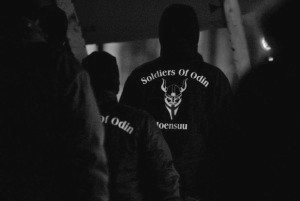
On 1 February 2016, The Independent publishes an article titled “Soldiers of Odin: The Far-right Groups in Finland ‘Protecting Women’ from Asylum Seekers.” Image from the article. ←

In early March 2016, Donald Trump declares in a presidential rally of his protesters: “These are not people. Just remember that. … Do whatever you have to do to them, I don’t care. And you know what? I think I’m totally within my rights to say that.” “I love the old days. You know what they used to do to guys like that this? They’d be carried out in a stretch folks. Like that, punch them in the face. Yeah.” Image Yassiel Perez. Tweet. 9 September 2015. ←
For scientist Shane J. Lopez, author of a 2013 book ‘Making Hope Happen: Create the Future You Want for Yourself and Others,’ hope is to believe in a set of four aspects of the process: the future will be better than the present; the person has the power to make it so; there are many paths to the better future; understanding that these paths won’t be free of obstacles. ←
“…If [philosopher Blaise] Pascal’s pessimism can effectively console us, it may be because we are usually cast into gloom not so much by negativity as by hope. It is hope – with regard to our careers, our love lives, our children, our politicians and our planet – that is primarily to blame for angering and embittering us,” writes philosopher Alain de Botton in his 2012 book ‘Religion for Atheists.’ ←
“Design’s inherent optimism leaves no alternative but it is becoming clear that many of the challenges we face today are unfixable and that the only way to overcome them is by changing our values, beliefs, attitudes, and behavior,” write Anthony Dunne and Fiona Raby in their 2013 book ‘Speculative Everything.’ “Although essential most of the time, design’s inbuilt optimism can greatly complicate things, first, as a form of denial that the problems we face are more serious than they appear and second, by channelling energy and resources into fiddling with the world out there rather than the ideas and attitudes inside our heads that shape the world out there.” ←



